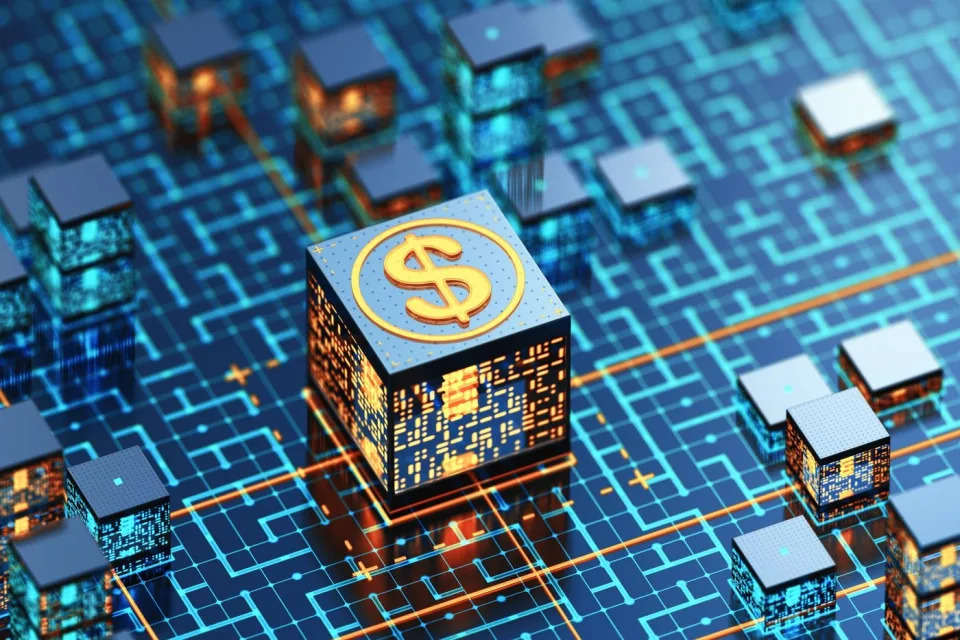Should You Forget Bitcoin and Buy Solana Instead?
Bitcoin 's (CRYPTO: BTC) price hit an all-time high of $103,332 on Dec. 4. Four main catalysts drove it to that point: the approvals of its first spot price ETFs in January; its latest halving in April, which cuts its rewards for mining in half every four years; interest rate cuts; and President-elect Trump's crypto-friendly policies.
Bitcoin's price has pulled back to about $97,000 as of this writing, but it remains up more than 120% over the past 12 months. With a market capitalization of $1.93 trillion, it's the world's top cryptocurrency and seventh most valuable asset.

Bitcoin is still a solid long-term play on the cryptocurrency market, but it might have less upside potential than its smaller coins. Could one of those tokens be Solana (CRYPTO: SOL) , which trades at about $190 with a market cap of $90 billion?
What sets Solana apart from Bitcoin?
Solana's tokens are validated with the proof of stake ( PoS ) method, which doesn't require any tokens to be digitally mined. That approach is faster and more energy efficient than the proof of work (PoW) mining mechanism used by Bitcoin.
PoW blockchains are only used for mining more tokens. PoS blockchains support smart contracts, which can be used to develop decentralized apps (dApps), games, non-fungible tokens (NFTs), and other crypto assets. PoS tokens can also be "staked," or locked up, on the blockchain for a period of time to earn interest-like rewards.
Bitcoin's value is often defined by its scarcity. It has a maximum supply of 21 million tokens, and nearly 20 million of them have already been mined. The last Bitcoin is expected to be mined in 2140, which makes it somewhat comparable to gold or silver.
Solana and other PoS tokens are usually valued by the speed of their blockchains and the growth of their developer ecosystems. Solana has a current supply of nearly 591 million tokens and no maximum supply, but it's set to reduce its annual inflation rate, currently at 4.83%, by 15% every "epoch year," which amounts to 450-630 days.
What sets Solana apart from other PoS tokens?
Solana is often overshadowed by Ethereum (CRYPTO: ETH) , the world's second largest cryptocurrency and top PoS blockchain. Ethereum has its own native token, Ether, but many other smaller PoS tokens, including Shiba Inu , Polygon , and Render , run on its blockchain. It's easier to directly launch a new token on Ethereum's blockchain than to build one from scratch, but these tokens are ultimately constrained by Ethereum's speed limitations.
Solana is a newer PoS blockchain that accelerates its transactions with its own proof-of-history (PoH) mechanism. That upgrade already enables Solana's blockchain to process transactions roughly 46 times faster than Ethereum, but it's only achieved less than 2% of its theoretical max speed so far.
Solana's high-speed blockchain has attracted a lot of developers and partners. It's been used to develop meme coins such as BONK and WIF , and it powers decentralized exchanges including Jupiter and Orca. It supports stablecoin transactions for Visa , PayPal , and Circle, and it's integrated its Solana Pay payment protocol into Shopify 's platform.
Solana even launched its own Android smartphone for Web3 apps, the Saga Phone, in 2023. It's still a niche gadget, but it sports its own dApps Store as an alternative to Alphabet 's Google Play Store.
But over the past two years, Solana dealt with network congestion problems, spam transactions, and security failures. One of its top investors was also the failed crypto exchange FTX, which hastily liquidated its tokens at a discount to pay off its creditors. All of those challenges, along with rising interest rates, drove its price below $10 in December 2022.
What's next for Solana?
Solana's price has already soared nearly 19 times from its all-time low, but it could head even higher as it resolves its network issues, it laps FTX's big sale, and interest rates gradually decline. Several big crypto firms, including Grayscale, Bitwise, and VanEck, have also recently filed for the approvals of Solana spot price ETFs.
Those ETF approvals could stabilize Solana's price while bringing in more retail and institutional investors. They would also probably mark its transition from a smaller altcoin to a "blue chip" cryptocurrency such as Bitcoin and Ether.
But is Solana a viable alternative to Bitcoin?
Solana is an interesting alternative to Ether, but it's not a viable replacement for Bitcoin yet. Solana might be a good investment if you believe it can keep increasing its speed, expanding its ecosystem, and gaining new ETF approvals. However, it's still an inflationary token that's much harder to value than Bitcoin.
It could be smart to invest in both Bitcoin and Solana, but investors should be aware of their differences. Bitcoin can be considered a digital alternative to gold, but Solana's value will be defined by its transaction speeds and developer appeal.
Before you buy stock in Solana, consider this:

